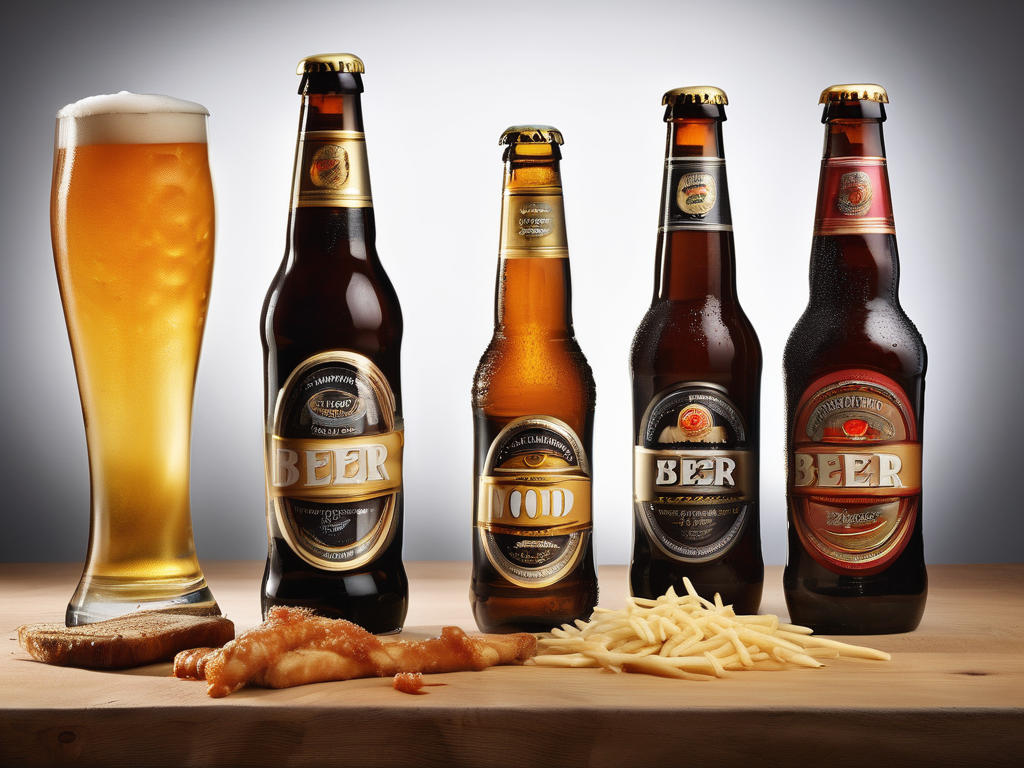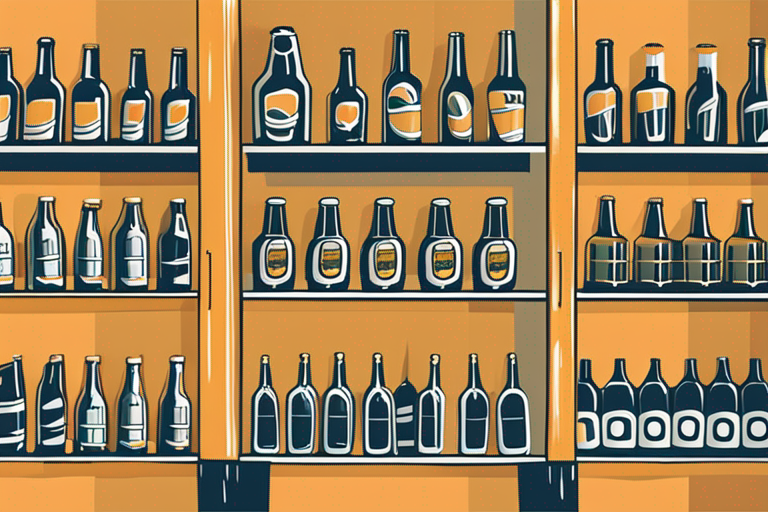
How to Properly Store an Opened Beer Bottle
Get Your Free Food Safety Cheat Sheet
30 most common foods with instant answers. Print it and stick it on your fridge—completely free!
How to Properly Store an Opened Beer Bottle
When it comes to enjoying a refreshing beer, proper storage is key to maintaining its quality and taste. Whether you’re savoring a craft brew or a classic favorite, knowing how to store an opened beer bottle can make all the difference. In this guide, we’ll explore the best practices for storing an opened beer bottle to ensure that every sip is as delightful as the first. (Beer)
Why Proper Beer Storage Matters
Before delving into the specifics of storing an opened beer bottle, it’s essential to understand why proper storage is crucial. Beer is a delicate beverage that can be easily affected by external factors such as light, temperature, and air exposure. Improper storage can lead to a loss of flavor, aroma, and even spoilage. By following the right storage techniques, you can preserve the quality of your beer and prolong its shelf life.
Factors that Affect Beer Storage
-
Light: Exposure to light, especially UV light, can cause beer to develop a "skunky" flavor due to the breakdown of hop compounds. It’s important to store beer away from direct sunlight or fluorescent lighting.
-
Temperature: Fluctuations in temperature can impact the flavor and carbonation of beer. Ideally, beer should be stored at a consistent temperature between 45-55°F (7-13°C) to maintain its quality.
-
Air Exposure: Oxidation is a common issue with opened beer bottles. When beer comes into contact with air, it can lead to off-flavors and a stale taste. Minimizing air exposure is key to preserving the freshness of beer.
Best Practices for Storing an Opened Beer Bottle
Now that you understand the importance of proper beer storage, let’s dive into the best practices for storing an opened beer bottle.
1. Seal the Bottle Properly
-
Cap it Tightly: After opening a beer bottle, make sure to reseal it tightly with the original cap or a bottle stopper to prevent air from entering.
-
Use a Vacuum Sealer: Consider investing in a vacuum sealer designed for wine bottles, which can help remove excess air and create a tight seal.
2. Store in a Cool, Dark Place
-
Avoid Sunlight: Keep opened beer bottles away from direct sunlight or bright artificial light to prevent light-struck flavors.
-
Maintain Consistent Temperature: Store beer in a cool, dark place with a stable temperature to preserve its flavor profile.
3. Refrigerate for Optimal Freshness
-
Refrigeration: For most beers, refrigeration is the best way to maintain freshness and prevent spoilage. Cold temperatures slow down the oxidation process and help retain carbonation.
-
Avoid Temperature Fluctuations: Keep the beer refrigerated consistently, as frequent temperature changes can negatively impact its taste.
4. Consider the Beer Style
-
Hoppy Beers: If you’re storing hoppy beers like IPAs, it’s especially important to keep them cold to preserve their delicate hop flavors.
-
Dark Beers: Stouts and porters can benefit from slightly warmer storage temperatures to enhance their complex flavors.
5. Monitor and Enjoy Within a Reasonable Timeframe
-
Check for Signs of Spoilage: Before consuming an opened beer bottle, inspect it for any off-smells, unusual colors, or flavors that indicate spoilage.
-
Enjoy Freshness: While beer can be stored for some time after opening, it’s best to consume it within a few days to a week for optimal freshness.
Conclusion
Properly storing an opened beer bottle is essential for preserving its taste and quality. By following the tips outlined in this guide, you can ensure that every sip of your favorite brew is as enjoyable as the first. Remember to seal the bottle tightly, store it in a cool, dark place, refrigerate for freshness, consider the beer style, and monitor its condition before consumption. Cheers to a perfectly stored beer bottle and a delightful drinking experience!
For more information on beer, visit our beer page.
Remember, a well-stored beer is a flavorful beer! (Beer)

Authoritative Food Safety References
These agencies and university labs inform every tip and health precaution we publish.
USDA FoodKeeper – Cold Storage Guidelines
Official refrigerator, freezer, and pantry timelines maintained by the U.S. Department of Agriculture.
Visit USDA FoodKeeperFDA Produce Safety Rule & Grower Guidance
Field-to-fridge handling practices that prevent contamination of fruits, vegetables, and leafy greens.
Visit FDA Produce SafetyCDC Foodborne Illness Prevention Hub
Surveillance-backed guidance on pathogens, symptoms, and steps to reduce foodborne illness risk.
Visit CDC Food SafetyUC Davis Postharvest Technology Center
University research detailing optimal storage atmospheres for produce after harvest.
Visit UC Davis PostharvestPenn State Extension – Home Food Preservation & Safety
Peer-reviewed extension bulletins on safe canning, chilling, and reheating practices.
Visit Penn State ExtensionHow long can an opened beer bottle be stored before it goes bad?
Can I store an opened beer bottle at room temperature?
Should I reseal an opened beer bottle before storing it?
Can I store an opened beer bottle on its side?
Can I freeze an opened beer bottle for storage?
Get Your Free Food Safety Cheat Sheet
30 most common foods with instant answers. Print it and stick it on your fridge—completely free! Want more? Upgrade to the complete guide with 70+ foods.
Scan your food directly and get instant safety info using our AI-powered camera feature.